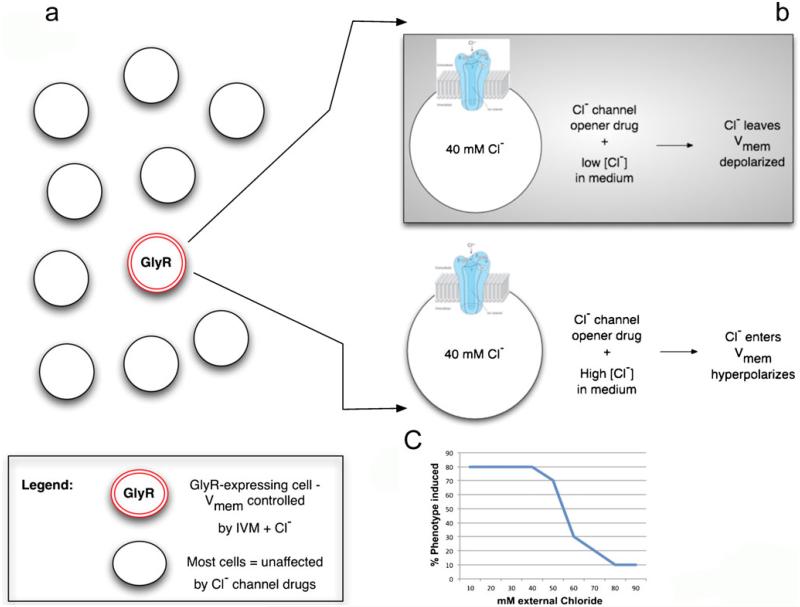Fig. 5.
Pharmacological strategy for specific control of Vmem. To control Vmem experimentally, the best strategy is first to express a convenient ion channel in cell(s) of interest (or make sure it is expressed there natively); alternatively, an ionophore can be used if the targeting of specific cell subpopulations is not needed. Then, the channel is opened with a specific pharmacological activator and the extracellular concentration of that ion is varied in the medium. For example, in a field of embryonic cells, some express the glycine-gated chloride channel GlyR (a). When targeted by Ivermectin (IVM), a specific GlyR opener (b), these cells can be depolarized in medium of low chloride content (because negative chloride ions will tend to leave the cells via the open channel down their concentration gradient) and hyperpolarized in a medium of high chloride content (since the negative Cl− ions will enter the cells). By varying the chloride level, one can observe, for example, the disappearance of a depolarization-induced phenotype, as the Vmem is driven toward hyperpolarization by the high chloride content (c typical result of a hypothetical experiment). To use this method quantitatively to measure or create absolute values of Vmem, it helps to know the internal and external concentrations of all the ions and their permeability coefficients. Then, the Goldman-Katz-Hodgkin equation can be used to calculate Vmem

